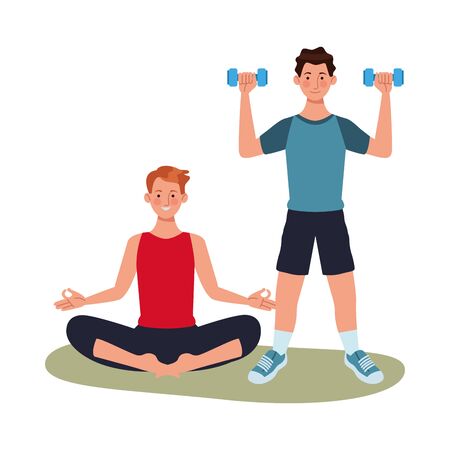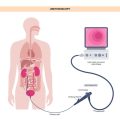Introduction to Gait Training in UK Physiotherapy
Gait training stands as a cornerstone of physiotherapy practice in the United Kingdom, underpinning the rehabilitation journeys of countless individuals recovering from injury, surgery, or neurological conditions. At its core, gait training refers to the structured and purposeful process of improving an individual’s walking ability, incorporating both the mechanical and functional aspects of movement. Within the UK context, physiotherapists adopt evidence-based methodologies grounded in clinical reasoning and tailored assessment to address a broad spectrum of mobility challenges. The significance of gait training extends beyond the restoration of basic ambulation; it is intimately linked to enhancing independence, reducing fall risk, and fostering overall quality of life for patients. Through a careful balance of hands-on facilitation, assistive technologies, and patient education, UK physiotherapists are uniquely positioned to implement best practice approaches that reflect both national guidelines and patient-centred care philosophies. This foundational overview sets the stage for a deeper exploration into the principles, techniques, and evolving landscape of gait rehabilitation within British healthcare settings.
2. Assessing Gait Impairments: UK Approaches
In the context of physiotherapy practice across the UK, the assessment of gait impairments is a systematic process that integrates a variety of tools and methodologies to ensure precise diagnosis and effective intervention planning. This section explores the primary approaches employed by UK physiotherapists, focusing on assessment tools, observational strategies, and standardised outcome measures.
Observational Gait Analysis
One of the foundational elements in assessing gait dysfunction within UK clinical settings is observational gait analysis. Physiotherapists utilise both informal and structured observation techniques to identify deviations from normal gait patterns. This process typically involves:
- Visual inspection during ambulation over set distances
- Assessment from multiple planes (sagittal, frontal, transverse)
- Video analysis to capture subtle abnormalities and facilitate patient education
Assessment Tools in UK Practice
A range of assessment tools are commonly employed by physiotherapists to enhance objectivity in gait evaluation. These include:
| Assessment Tool | Description | Clinical Application |
|---|---|---|
| Tinetti Performance Oriented Mobility Assessment (POMA) | Evaluates balance and gait through a series of functional tasks | Elderly fall risk screening, neurological conditions |
| 10-Metre Walk Test (10MWT) | Measures walking speed over a short distance | Stroke, MS, orthopaedic rehabilitation |
| Berg Balance Scale (BBS) | Assesses static and dynamic balance abilities | Postural control assessment in various populations |
| Functional Ambulation Categories (FAC) | Categorises level of independence in walking | Rehabilitation progress tracking, discharge planning |
| Timed Up and Go (TUG) Test | Measures mobility, balance, and fall risk via timed task | General mobility assessment in community and hospital settings |
Standardised Outcome Measures: Ensuring Consistency and Comparability
The use of standardised outcome measures is integral to UK physiotherapy practice. These measures provide reproducible data for monitoring patient progress and benchmarking against national standards. Widely adopted outcome measures include:
- 6-Minute Walk Test (6MWT): Gauges endurance and functional mobility.
- The Rivermead Visual Gait Assessment (RVGA): Structured tool for visual scoring of gait deviations.
- The Functional Gait Assessment (FGA): Assesses postural stability during walking tasks with environmental challenges.
- The Dynamic Gait Index (DGI): Evaluates ability to modify balance while walking in response to changing demands.
Cultural Considerations in the UK Context
UK physiotherapists are mindful of the influence of cultural diversity, local community environments, and NHS resources on assessment choices. Adaptations may be made according to urban or rural settings, accessibility to equipment, and specific patient demographics.

3. Evidence-Based Gait Training Techniques
In the context of UK physiotherapy practice, both NHS and private sectors prioritise interventions that are underpinned by robust clinical evidence. Over recent years, gait rehabilitation has evolved significantly, guided by contemporary research and national clinical guidelines. Below is an overview of the principal evidence-based techniques adopted to facilitate safe and effective gait retraining.
Task-Specific Training
Task-specific training remains a cornerstone of gait rehabilitation in the UK. This approach involves practising walking activities that closely replicate real-life scenarios, such as negotiating curbs or uneven surfaces. NICE guidelines and NHS protocols advocate for progressive, repetitive practice tailored to the individual’s functional level, ensuring transferability to daily mobility tasks.
Treadmill Training with Partial Body Weight Support
Treadmill training, particularly when combined with partial body weight support (PBWS), is widely used in both acute and community settings. This technique enables patients with neurological conditions or significant weakness to practise walking in a safe, controlled environment. Evidence from systematic reviews highlights improved gait speed and endurance when treadmill training is appropriately integrated into rehabilitation programmes.
Strengthening and Balance Exercises
Research consistently supports the integration of strengthening and balance exercises into gait retraining regimes. These interventions target lower limb muscle groups, core stability, and proprioceptive control—key components for optimal walking performance. Programmes often include sit-to-stand drills, step-ups, static and dynamic balance tasks, progressing in complexity as the patient’s abilities improve.
Use of Assistive Devices
The judicious use of assistive devices such as walking aids (e.g., sticks, rollators) forms an integral part of UK physiotherapy practice. Selection is based on thorough assessment, balancing safety with the promotion of independent ambulation. Ongoing education regarding device use and regular review ensure patients do not become overly reliant on aids where further progression is possible.
Technology-Enhanced Interventions
Recent years have seen increasing adoption of technology-enhanced interventions within both NHS and private practice settings. These include functional electrical stimulation (FES), wearable sensors for gait analysis, and virtual reality-based training platforms. Such modalities offer opportunities for precise feedback and motivation, contributing to improved outcomes when combined with conventional therapy.
The implementation of these evidence-based techniques reflects a commitment within UK physiotherapy to deliver high-quality, individualised care that maximises functional recovery while promoting patient autonomy throughout the rehabilitation journey.
4. Multidisciplinary Teamwork and Patient-Centred Care
Within UK physiotherapy practice, gait training is rarely a standalone intervention. Rather, it is embedded within a multidisciplinary framework that brings together the expertise of various allied health professionals. This collaborative approach ensures that gait rehabilitation is both comprehensive and responsive to the complex needs of each patient.
The Collaborative Nature of Gait Training
Effective gait training relies on seamless communication and cooperation between physiotherapists, occupational therapists, and other allied health professionals such as speech and language therapists or podiatrists. Each professional contributes unique insights and skills, ensuring that the patient receives holistic care tailored to their specific goals and challenges.
Roles of Key Allied Health Professionals in Gait Training
| Professional | Main Contributions to Gait Training |
|---|---|
| Physiotherapist | Assessment of gait patterns, development of personalised exercise programmes, use of manual therapy and assistive devices, monitoring progress. |
| Occupational Therapist | Functional assessment of mobility in daily life settings, home environment modifications, advice on adaptive equipment for safe ambulation. |
| Podiatrist | Evaluation of foot mechanics, provision of orthotics or footwear recommendations to optimise gait efficiency and reduce pain. |
| Speech and Language Therapist | Support for patients with neurological conditions where communication or swallowing may impact participation in gait training sessions. |
| Nurse Specialist | Ongoing medical management (e.g., diabetes or cardiovascular issues), wound care, patient education. |
Emphasis on Patient-Centred Care
The British approach to gait training places significant emphasis on tailoring interventions to individual needs. This means considering not only the physical aspects of walking but also personal preferences, lifestyle factors, social circumstances, and psychological wellbeing. Patients are encouraged to be active participants in their rehabilitation journey, fostering autonomy and motivation throughout the process.
Key Elements of Patient-Centred Gait Rehabilitation in the UK:
- Individualised Goal Setting: Goals are jointly agreed upon with patients, ensuring relevance and personal meaning.
- Cultural Sensitivity: Interventions respect diverse backgrounds and expectations common within UK communities.
- Holistic Support: Addressing emotional, social, and practical barriers as well as physical impairments.
- Regular Review: Ongoing evaluation and adaptation of treatment plans based on patient feedback and clinical outcomes.
This integrated and adaptive approach not only improves functional outcomes but also enhances patient satisfaction, supporting long-term engagement with rehabilitation programmes across NHS and private settings in the UK.
5. Addressing Barriers and Promoting Inclusivity
In the context of UK physiotherapy practice, it is essential to recognise and proactively address the multifaceted barriers that may hinder effective gait training. These barriers are often rooted in socio-economic disparities, cultural diversity, and variations in accessibility across urban and rural settings. By understanding these unique factors, practitioners can foster greater inclusivity and optimise patient engagement and outcomes.
Socio-Economic Influences on Gait Training
Socio-economic status plays a significant role in shaping access to physiotherapy services within the UK. Patients from lower-income backgrounds may face challenges such as limited availability of transport, time constraints due to work commitments, or inability to afford supplementary private care. NHS waiting lists can further exacerbate these issues, potentially delaying timely intervention. To counteract these barriers, physiotherapists are increasingly adopting community outreach initiatives and working collaboratively with local authorities to ensure that gait training programmes remain accessible to all, regardless of financial circumstance.
Cultural Considerations and Patient Engagement
The UK’s multicultural population brings a broad spectrum of beliefs, attitudes towards rehabilitation, and language preferences. Some communities may harbour misconceptions about physiotherapy or hold cultural reservations about certain exercises or therapist-patient interactions. Recognising these nuances is crucial; thus, culturally sensitive communication and the provision of translated educational materials can significantly enhance patient trust and participation. Furthermore, involving family members or community leaders in the rehabilitation process can bridge cultural gaps and improve adherence to gait training regimens.
Accessibility: Bridging Geographical and Physical Gaps
Geographical disparities between urban centres and rural areas can impact the delivery of gait training services. While metropolitan regions often benefit from well-resourced clinics, patients in remote or underserved areas may struggle with limited service provision. To mitigate this, tele-rehabilitation and digital health platforms have become increasingly prevalent across the UK, enabling virtual assessments and personalised exercise guidance. Additionally, ensuring physical accessibility for individuals with mobility impairments—through step-free clinic entrances or home visit options—remains a top priority within inclusive practice models.
Promoting Inclusivity through Policy and Practice
On a systemic level, UK healthcare policy emphasises reducing health inequalities by mandating equitable service provision across all demographic groups. Physiotherapists are encouraged to undertake continuous professional development focused on equality, diversity, and inclusion (EDI), ensuring their practices reflect current standards. Interdisciplinary collaboration with social workers, occupational therapists, and community organisations further supports holistic care delivery tailored to individual needs.
Conclusion: Towards Equitable Gait Training Outcomes
By critically addressing socio-economic, cultural, and accessibility barriers unique to the UK landscape, physiotherapists can cultivate more inclusive gait training programmes. Such an approach not only enhances patient engagement but also leads to improved functional outcomes across diverse populations—fulfilling the broader objective of equitable rehabilitation within UK healthcare.
6. Future Directions and Innovations in UK Gait Rehabilitation
As the landscape of physiotherapy continues to evolve, gait rehabilitation in the UK is experiencing a wave of innovation driven by technological advancements, fresh research insights, and changing patient expectations. This final section explores the most significant developments shaping the future of gait training, with a focus on how UK practitioners are adapting to and integrating these changes into clinical practice.
Emerging Technologies Revolutionising Gait Training
The integration of digital technologies is fundamentally transforming gait rehabilitation. Wearable sensors now provide real-time feedback on patients’ movement patterns, enabling more precise assessment and tailored interventions. Virtual reality (VR) systems are increasingly used within NHS trusts and private clinics alike, offering immersive environments for gait retraining that can improve engagement and motivation. Additionally, robotic-assisted gait training devices—such as exoskeletons—are becoming more accessible, allowing for intensive, repetitive practice crucial for neuroplasticity following conditions such as stroke or spinal cord injury.
New Research Trends Informing Evidence-Based Practice
UK physiotherapy research is increasingly focused on personalisation and outcomes measurement in gait rehabilitation. Large-scale studies supported by institutions such as the National Institute for Health and Care Research (NIHR) are investigating the long-term effectiveness of various gait retraining protocols across diverse populations, from older adults at risk of falls to those with complex neurological disorders. There is also a growing emphasis on understanding psychosocial factors affecting adherence to gait programmes, reflecting a broader shift towards holistic, patient-centred care.
Tele-rehabilitation and Remote Monitoring
The COVID-19 pandemic accelerated the adoption of tele-rehabilitation across the UK. Physiotherapists now routinely use secure video platforms to deliver supervised gait training sessions remotely, especially in rural or underserved areas. Remote monitoring tools allow clinicians to track patients’ progress between appointments, supporting self-management and potentially reducing waiting times within the NHS system.
Interdisciplinary Collaboration and Integrated Care Pathways
The future of gait rehabilitation in the UK lies in closer interdisciplinary collaboration. Physiotherapists are working alongside occupational therapists, orthotists, podiatrists, and medical specialists within integrated care pathways to provide comprehensive support. This approach ensures that biomechanical, functional, and psychological aspects of gait dysfunction are addressed holistically.
Challenges and Opportunities Ahead
While technological innovation brings many opportunities, it also presents challenges such as ensuring equitable access across different regions and maintaining high standards of data security. Continued investment in professional development is essential so that physiotherapists remain adept at leveraging new tools without losing sight of fundamental hands-on skills.
In summary, the UK’s approach to gait rehabilitation is entering an exciting era marked by rapid innovation, robust research activity, and a strong commitment to personalised care. By embracing these changes while upholding core professional values, UK physiotherapists are well placed to lead advances in mobility restoration for people across all walks of life.


